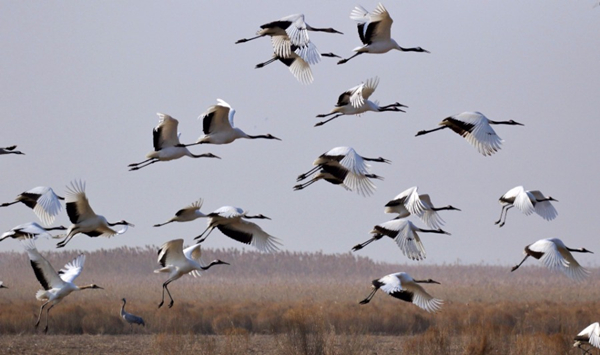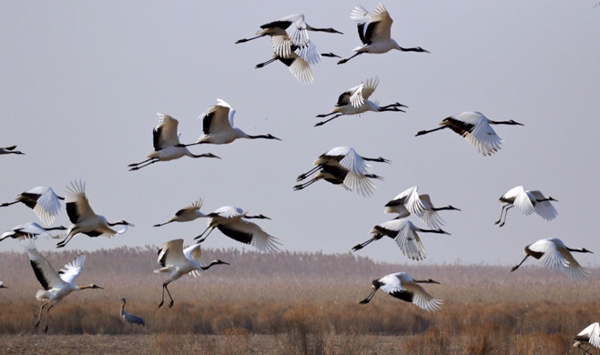
Four species of endangered migratory birds -- red-crowned cranes, spoon-billed sandpipers, Nordman's greenshanks and Saunders' gulls -- will be better protected in China as their key habitats were listed as a World Natural Heritage Site on Friday.
At the ongoing 43rd session of the UNESCO World Heritage Committee in Azerbaijan's capital of Baku, China's Migratory Bird Sanctuaries along the Coast of the Yellow Sea-Bohai Gulf (Phase I) were inscribed to the World Heritage List as a natural site.
It is the country's 54th World Heritage Site and 14th World Natural Heritage Site, and also the country's first and the world's second Intertidal Mudflat Heritage Site, according to a news release from the National Forestry and Grassland Administration.
"It fills in the country's gap in Intertidal Wetland Heritage Sites," the release said.
The Phase I site, covering most of the Yancheng Rare Birds National Nature Reserve, the Dafeng Milu Deer National Nature Reserve and intertidal mudflats facing the Yellow Sea in the cities of Yancheng and Dongtai in Jiangsu province, is right in the middle of the East Asian-Australasian Flyway. Every year, thousands of migratory birds, especially shorebirds, would make stopovers, breed or winter on the intertidal wetlands in the area.
Of them, more than 90 percent of the world's spoon-billed sandpipers, a critically endangered sparrow-sized shorebird, would make stopovers during the 8,000-kilometer-long migration route between their breeding grounds in Siberia and their wintering grounds in the south. About 80 percent of the world's wild red-crowned cranes will winter in the Phase I area, according to the National Forestry and Grassland Administration.
"The bird sanctuaries are truly one of the most important sites for the world's shorebirds," said Wen Cheng, a member of the World Heritage Expert Committee under the administration. Wen has participated in the whole nomination process of the World Heritage Site and made dozens of field trips to the area since 2017.
He said that East China's tidal mudflats have long been affected by economic development. "Massive human activities, such as aquaculture and the construction of wind power plants, and the spread of such invading species as spartina (a cordgrass) on the mudflats have destroyed many of the country's tidal mudflats," he said. As a result, the rich intertidal wetlands in Yancheng and Dongtai have become vital for the survival of many shorebird species.
Terry Townshend, founder of the Birding Beijing website and a British ornithologist, considered the area being successfully listed as a World Heritage Site reflecting a brighter future for migratory shorebirds.
"It's not a silver bullet but it's a big step forward as a formal World Heritage Site listing comes with hard protection obligations," he said.






